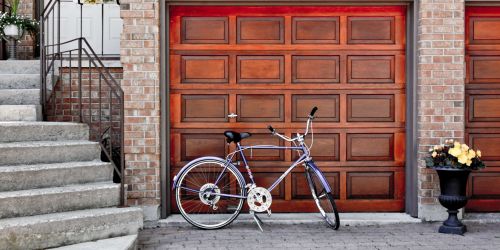Your living room or family room is home to a wide variety of items, including electronics, artwork, and bulky furniture. While some of your family room furniture and other belongings are fairly straightforward to pack, many of these household staples will require special consideration. Read on for our tips on wrapping furniture for moving and furniture packing suggestions, including how to pack a couch for moving.
Like any room, the best way to get the ball rolling is to start by decluttering.
Clear out unused things like old baby items, the furniture you won’t have space for in your new home, electronics you never use, and gifts you never liked but felt guilty giving away. Any items that are still in good, working condition can be donated or sold, but anything broken or falling apart should be tossed.
Here are our tips for living room furniture packing:
Breakables
After you declutter, pack up any fragile or breakable items like antique lamps or figurines and other collectibles. Getting these things out of the way will make it easier to pack the rest of your living room without having to worry about breaking any treasured keepsakes.
Wrap each item individually in packing paper and/or bubble wrap. Tape the paper or bubble wrap in place, then pack the item into a small box. Do not overstuff the box, and make sure you mark it as “FRAGILE”.
| PRO TIP: Sonya at Spacewise Organizing recommends taking the time to pack breakable items well. "Even if you're moving across town, one abrupt stop could leave all of your collectibles in a broken heap. Use towels, sheets, and other linens to wrap larger breakables. It saves the space of packing the linens separately and provides protection for your fragile items." |
Wall hangings and artwork
Wall hangings, mirrors, and artwork are another good candidate for early packing—not only will they be out of your way and less likely to sustain damage, but your room will appear emptier, which can help you visualize the progress you’re making in the moving process.
Here’s how to safely pack these items:
- Tape a large “X” over any glass surfaces and mirrors. This will help keep the glass in place if it happens to shatter in transit. Use masking tape to avoid leaving a sticky residue.
- Wrap the piece in the newspaper, bubble wrap, and/or moving blankets before loading it into a picture box. If you’re using bubble wrap, make sure you wrap your artwork or mirror in packing paper first. The bubbles can leave an imprint on the glass.
- Fill in any empty space in the picture box with packing materials to prevent movement. You can use anything but packing peanuts, which will settle to the bottom of the box (and also create a mess when you do unpack).
- Tape the box shut and mark it as “FRAGILE”.

How to Pack and Wrap Furniture
Packing your furniture for moving will likely comprise the bulk of your moving prep for this room. Start by emptying out any drawers or shelves, and whenever possible, separate any modular pieces like sectional sofas into individual components. Keep the hardware in a plastic bag that is clearly labeled or securely attached to furniture. Then you can start wrapping your furniture for your move.
Couches, chairs, and other upholstered pieces
When moving upholstered items like couches, armchairs, or ottomans, your main concern will be to protect the fabric from damage such as rips, stains, water damage, and dust. Most moving companies will shrink wrap any upholstered items before loading them into the truck to ensure they don’t get dirty in transit, but you should always ask before your moving day so you know whether you need to properly wrap and protect your furniture yourself before your movers arrive.
If you are moving long distance and are shipping your upholstered furniture separately, start by wrapping them in moving blankets. Here's how to wrap your furniture in moving blankets:
- Wrap your furniture completely in moving blankets. Ensure that any finished wood components are covered.
- Tape the blankets in place, then seal using shrink wrap. Poke holes in the shrink wrap so your furniture can breathe on its journey, and take not to directly shrink-wrap upholstered furniture—this can cause condensation that will ruin the fabric, especially for leather furniture.
Coffee and end tables
Most coffee and end tables are simple to pack. Here’s how:
- Empty and secure any drawers.
- Disassemble what you can and pack individual pieces separately. That way, these pieces will take up less space on the truck and are less likely to cause or suffer damage. Store screws or small pieces in a resealable bag.
- Wrap the tabletop in a moving blanket and secure it with tape, taking care not to let the tape adhere to the tabletop. If you have a glass tabletop, wrap the entire glass top in the paper, secure the paper with tape, then wrap in bubble wrap. Bubble wrap can leave marks if it makes direct contact with the glass.
- Wrap legs in packing paper and secure to the underside of the tabletop.
If your living room furniture is antique, your coffee and end tables will require special care. Learn more about our antique shipping services.
TV Cabinets
Empty out any internal compartments and remove any glass doors. If this isn’t possible, secure them tightly with masking tape before moving. You should also secure any doors or drawers.
| PRO TIP: If you have to tape glass, always use masking tape. Other tapes like duct tape or packing tape can leave a sticky residue that can be difficult to remove. |
Once everything is empty and secured in place, wrap your cabinet in moving blankets.

Draperies and window treatments
Draperies and window treatments can be packed into special drapery moving boxes with built-in hanging rods, or into regular moving boxes. The method you choose will depend on the value of your window treatments, as well as how many sets of drapes you have to move, and how much you’ve budgeted for supplies.
- If you invest in special drapery moving boxes, start by wrapping the rod inside the box with packing paper to protect your window treatments from dirt. Then, wrap your drapes around it once so they don’t slip off—that way, you won’t have to secure them in place using pins, which could damage your drapes. You could also secure your drapes in place by wrapping the curtain ties (or other fabric or rope) around the top near the hanging rod.
- If a hanging box isn’t available, carefully fold and place the drapes in a standard box or bureau drawer. Just make sure the box is clean - drapes are expensive to clean. Fold loosely to avoid wrinkles, and cover with a towel to protect your window treatments from dust and dirt.
Regardless of how you pack your drapes, always remove curtain rods and pack them separately. If you clean your drapes before you move, make sure you don’t pack them wet - they can get moldy.
Lamps
Lamps are bulky and fragile, and we tend to have a number of them throughout our homes, which makes them one of the most troublesome items to move. Here’s how to pack up your lamps:
- Remove the bulb and harp. Discard the bulb, unless you have a safe and secure way to pack it. Incandescent bulbs are cheap and easily replaceable, but LEDS are a bit more expensive and might be worth the extra packing time and materials.
| PRO TIP: Moving is a great time to upgrade to energy-efficient LEDs. Save yourself the time and hassle of packing up fragile incandescent bulbs and replace your existing bulbs with LEDs at your new home. |
- Disassemble and pack the lamp base and shade separately. For the lampshade, use a sturdy box that’s at least two inches larger than the shade. Line the box with paper to prevent shifting, and resist the temptation to pack other items in with your lampshade. You can pack in other, smaller lampshades if you layer them with packing paper, tissue paper, pillowcases, or light towels. Whatever you do, don’t use newspaper—the ink can transfer and damage your lampshade. Wrap the base carefully in packing paper and place it upright in another box cushioned with crumpled packing paper.
- Mark the box as “FRAGILE”.

Electronics
Before you start packing up your electronics, review the original owner’s manual to see if it contains any instructions for packing and moving. If you tossed the manual, check online to see if you can download one.
The original packaging is always your best option for packing electronics. If you don’t have the original box stashed away, try contacting the manufacturer to see if they can send you a replacement box. Otherwise, it’s worth investing in special, heavy-duty cartons to move these expensive and easily breakable items.
Follow these tips for packing your electronics:
- Remove any media, such as DVDs or CDs, before packing.
- Protect screens (on TVs, computer monitors, etc.) with a layer of foam.
- Unplug and wipe down the cord, then secure it with twist ties. Label any cords that detach from the device, and try to keep cords in the same box as the device they are associated with.
- Wrap all electronics in packing paper before boxing to protect them from dust and dirt.
- Line the bottom of your box with anti-static bubble wrap or moving blankets to add an extra layer of protection. Reserve some packing paper to crumple at the top of the box.
- Pack the largest, heaviest pieces on the bottom of the box, and fill empty spaces with packing paper.
- Always mark the box as “FRAGILE” and “THIS SIDE UP”.
Components like speakers and computers may require some extra care:
Packing speakers
- Look for special speaker boxes that come with extra cushioning.
- Wrap each speaker in anti-static bubble wrap before boxing.
- If your speakers are too large to box, wrap them in moving blankets and secure them with tape or shrink wrap.
Packing your computer
- Back up your files in case something breaks during your move. Computer components are fickle and don’t appreciate being moved around.
- If you’re moving your printer, remove any ink or toner cartridges and store them in resealable bags. These cartridges are especially susceptible to temperature change, and you don’t want to open your box to a mess of leaked ink.
Rugs
Always vacuum your rug before you pack it. If you choose to get it professionally cleaned, make sure it’s completely dry before you roll it up.
Here’s how to pack your rug:
- Roll your rug around a piece of PVC pipe. Rolling the rug along its width so it’s as short as possible will make it easier to handle and stow in the truck. You want a tight roll to prevent shifting, but make sure you don’t roll your rug too tight - this could damage the warp (vertical strands of fiber) and weft (horizontal strands of fiber) of the rug.
| PRO TIP: Large rugs (larger than 6x9 feet) may be folded before rolling. If you hear a cracking noise while attempting to fold, stop—the creases your folds create could become permanent. |
- Wrap the rolled-up blanket in a bag or moving blanket. Opaque bags will help protect your rug from sun exposure.
- Secure the rolled and wrapped rug with heavy-duty twine, tape, or stretch film. These materials can cause indentations, so take care not to allow any of these materials to come into direct contact with the surface of the rug.
- Make sure your rug can breathe. Airtight packing will cause the rug to sweat, which can cause discoloration, warping, or even months. To prevent this, make pinholes in any plastic bags or sheeting you use to wrap your rug.

Books
Books are heavy, and depending on the size of your library, can be cumbersome and expensive to move. If you’re moving long distance or are paying your moving company based on the weight of your belongings, give some serious thought to downsizing your library before you pack.
| PRO TIP: When moving anywhere, but especially long distance, Sonya says that the most important tip for packing books is that they are in small enough boxes. Buy small or book boxes so they're not too heavy to carry. Be sure to label them specifically - not just books, but "Cookbooks" or "Fiction." If you know what room they'll be going to, label boxes with what's in them and where they're going. |
These tips will help you pack your books properly and safely:
- Use double the tape when assembling your boxes to account for the extra weight, especially if you’re using older or used boxes.
- Pack books of roughly the same size together into smaller boxes. If you have to use large boxes, fill the box partway with books, and use the empty space on top for lighter, softer items like clothing.
- Pack books flat, or with the spine towards the bottom of the box. Packing with the spine pointing upwards can cause the glue to break away from the binder. For paperback books, it can also cause the pages to bend.
- Label your box clearly as “BOOKS” so your movers can stack it appropriately. A shifting box of books can cause some serious damage to your other belongings.









